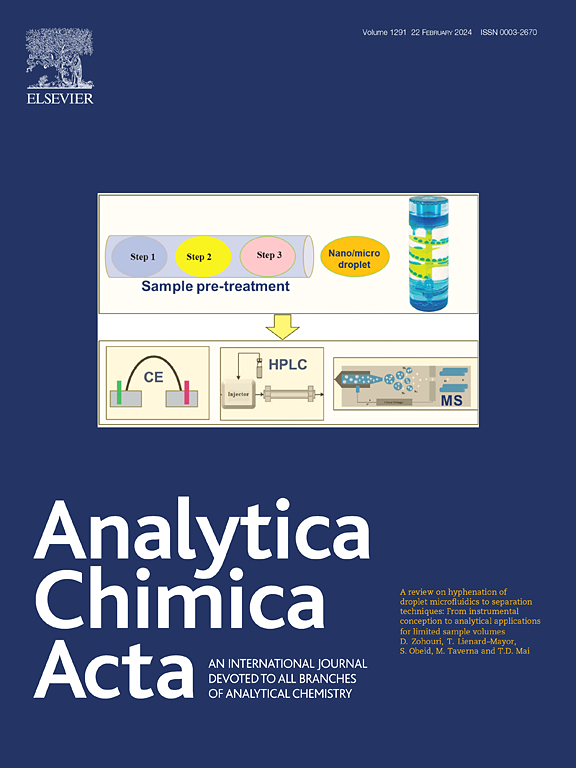Identification of microplastics and nanoplastics in environmental water by AFM-IR
IF 5.7
2区 化学
Q1 CHEMISTRY, ANALYTICAL
引用次数: 0
Abstract
Background
Microplastics and nanoplastics have gained worldwide attention as environmental hazards, and reliable analysis of these tiny particles is critical to accurate assessment of their impact to the environment and human health. Among the typical methods developed for analysis of microplastics, mass spectrometry-based methods are destructive and not applicable to individual nanoplastic particles, whereas vibrational spectroscopic techniques in combination with optical microscopy do not have sufficient spatial resolution needed for characterization of the much smaller nanoplastics. Therefore, a new tool is needed for the identification of nanoplastics in the environment.
Results
Here we report for the first time identification of individual nanoplastics in an environmental water sample directly by atomic force microscopy-infrared (AFM-IR), a spectroscopic technique with a spatial resolution of ∼100 nm. On the basis of their spectral characteristics, four different nanoplastics, including poly(3-hydroxybutyrate) (P3HB) and a bisphenol-A based epoxy, as well as microplastics of the latter and two different polyesters were identified unambiguously, and the P3HB nanoplastic particle was found to be highly crystalline. Particles of fatty acid salt, lactic acid salt and sulfate were also identified. Amide bands were observed in the spectra of some of these particles, indicative of protein contamination. In addition, a diatom and a bacterium were identified based on their IR spectra in conjunction with the morphology and elemental composition.
Significance
This work demonstrates that AFM-IR is a powerful tool for studying individual nanoplastic particles in environmental samples, capable of providing not only their identities but also detailed structure information.


求助全文
约1分钟内获得全文
求助全文
来源期刊

Analytica Chimica Acta
化学-分析化学
CiteScore
10.40
自引率
6.50%
发文量
1081
审稿时长
38 days
期刊介绍:
Analytica Chimica Acta has an open access mirror journal Analytica Chimica Acta: X, sharing the same aims and scope, editorial team, submission system and rigorous peer review.
Analytica Chimica Acta provides a forum for the rapid publication of original research, and critical, comprehensive reviews dealing with all aspects of fundamental and applied modern analytical chemistry. The journal welcomes the submission of research papers which report studies concerning the development of new and significant analytical methodologies. In determining the suitability of submitted articles for publication, particular scrutiny will be placed on the degree of novelty and impact of the research and the extent to which it adds to the existing body of knowledge in analytical chemistry.
 求助内容:
求助内容: 应助结果提醒方式:
应助结果提醒方式:


